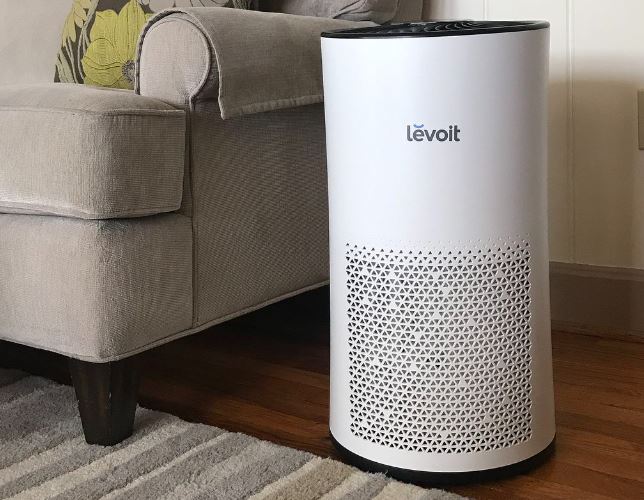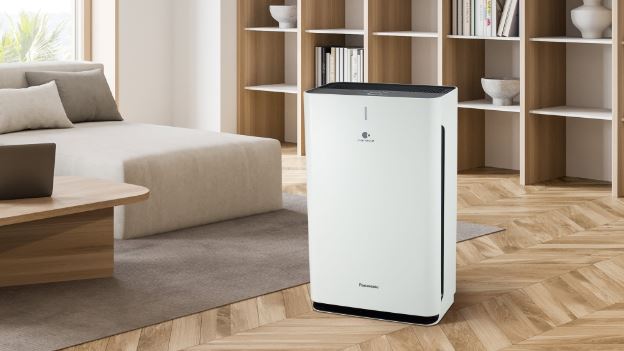Breathe Easy, Sleep Well: How Air Purifiers Can Improve Your Sleep Quality
Breathe Easy, Sleep Well: How Air Purifiers Can Improve Your Sleep Quality
Blog Article
In a health-conscious world, the air quality indoors and out has taken center stage for many people. With increasing environmental pollution and a better understanding of the influence of indoor air quality on overall health on our health, it's no surprise that the demand for air purifiers is on the rise.
Air purifiers are machines that clean the air of pollutants in a space, improving indoor air quality. They are ideal for people with allergies, asthma, or other respiratory issues as they can drastically decrease the presence of allergens, pollutants, and irritants in the air. Healthy individuals, too can take advantage of air purifiers, as they offer peace of mind and an extra layer of protection against airborne illnesses.
This comprehensive overview will delve into the fascinating realm of air purifiers, exploring their benefits, the variety of options on the market, key considerations when making a purchasing decision, and maximizing your air purifier's potential. By the end, you should have a thorough grasp of air purifiers and be able to decide confidently about whether investing in one is the right choice for your household.

Unraveling Indoor Air Contaminants and Their Impact on Health
To understand why air purifiers are essential, it's vital to understand the types of pollutants they target and the possible effects of exposure to these contaminants.
Indoor air pollutants can be broadly categorized into the following three categories:
- Particulate Contaminants: This includes tiny solid and liquid particles present in the air. Examples include pollen, smoke, dust, pet dander, and mold spores, to name a few. Particulate matter can lead to respiratory complications and trigger allergic reactions.
- VOCs: A Concern for Indoor Air: VOCs are gases released by solids and liquids. Sources of VOCs include aerosol sprays, cleaning products, paints, and pesticides, among others. Exposure to VOCs can lead to eye, nose, throat irritation, headaches, and stomach discomfort.
- Understanding Biological Contaminants: These include bacteria, viruses, mold, and mildew. They can cause a spectrum of health concerns, from minor allergies to serious infections.
The effects of these pollutants on human health can vary significantly. For those suffering from respiratory ailments or weakened immune systems, exposure to indoor air pollutants can lead to significant health complications. Even for healthy people, long-term exposure to certain pollutants can increase the risk of respiratory conditions and other health concerns over time.

The Science Behind Air Purifiers
Air purifiers use a variety of physical and chemical processes to effectively eliminate contaminants. Understanding the basic mechanisms employed by purifiers will help you grasp how they work and the variety of options on the market.
Here are the primary mechanisms and innovations used in air purifiers:
- Filtration Excellence: This is the most common method used in air purifiers. It involves using filters designed to trap airborne particles as air is drawn into the purifier. The filters can be made from various materials, each designed to trap particular particle types. For example:
- Initial Defense: Pre-filters: These are usually the initial barrier, capturing larger particles like dust, hair, and similar larger particles.
- HEPA Filters: The Gold Standard: HEPA filters are highly effective at trapping ultrafine particles, including pollen, dust mites, and some bacteria and viruses. To be labeled a genuine HEPA filter, it must trap a minimum of 99.97% of particles down to 0.3 microns in size.
- charcoal filtration: These filters are designed to adsorb odors, VOCs, and gaseous pollutants.
- Ionizers: Charging Ahead: Ionizers use electrical charges to create an abundance of negative ions, which attach themselves to particles in the air. The charged particles are drawn to nearby surfaces or the purifier itself.
- Ozone: A Powerful Purifier: Some air purifiers use ozone, a powerful oxidant, to break down pollutants. While effective, ozone is a respiratory irritant so these types of purifiers should be used with caution and only in unoccupied spaces.
- UV Light: A Radiant Solution: UV light can be used to effectively eliminate bacteria, viruses, and mold. UV light is commonly paired with filtration to eliminate particles, while UV light ensures any remaining biological contaminants are destroyed.
Choosing the Right Air Purifier
With a wide array of options available, selecting the right air purifier can be a difficult decision. It's important to consider multiple factors to ensure you make the right choice for your specific needs and space.
Here are some essential factors to weigh:
- Sizing Up the Room: Air purifiers are typically rated according to room size, so it's important to choose a model that can effectively handle the square footage of the room. Most purifiers will list a suggested room size or CADR rating, which indicates the rate at which it can deliver clean air.
- Type of Contaminants: Identify the particular contaminants you want to target. If you suffer from allergies, look for a purifier with a HEPA filtration system. For reducing unwanted smells, consider a model with a carbon-based filter. If you're concerned about pathogenic microorganisms, a purifier with UV-C light might be best.
- Noise Level: Air purifiers can produce varying levels of noise, so if you plan to use it in a quiet bedroom or tranquil space, look for models with a quiet mode for undisturbed rest.
- Long-term Considerations: Consider the ongoing costs and maintenance requirements of the purifier. HEPA filters generally require replacement every 6 to 12 months, depending on use and environmental factors. Include filter replacement costs in your calculations when making your choice.
- Additional Features: Many purifiers offer intelligent features like wireless connectivity, air quality sensors, and smart modes, allowing remote control and monitoring. These features can enhance the convenience and effectiveness of your purifier.
Optimizing Performance of Your Air Purifier
Once you've made your selection and installed it, there are several things you can do to ensure it operates at optimal levels and delivers the optimal results:
- Place it in the Right Location: Position your purifier in an central location, free from obstacles, to ensure optimal airflow. Avoid placing it near open windows or doorways as drafts can impact its efficiency.
- Keep it Running: For the best results, it's recommended to run your purifier continuously. Many models have automatic or low-power settings that respond to air quality changes, so you can maintain clean air without running up a huge energy bill.
- Maintain the Filters: Regularly adhere to the recommended filter replacement schedule. Over time, filters become clogged with particles, reducing the purifier's efficiency. Mark the date of replacement on your calendar so you don't forget.
- Limiting Indoor Pollutants: Alongside using an air purifier, take steps to minimize indoor air pollutants. This could include vacuuming, dusting, choosing natural cleaning alternatives, and limiting aerosol and chemical products. Report this page